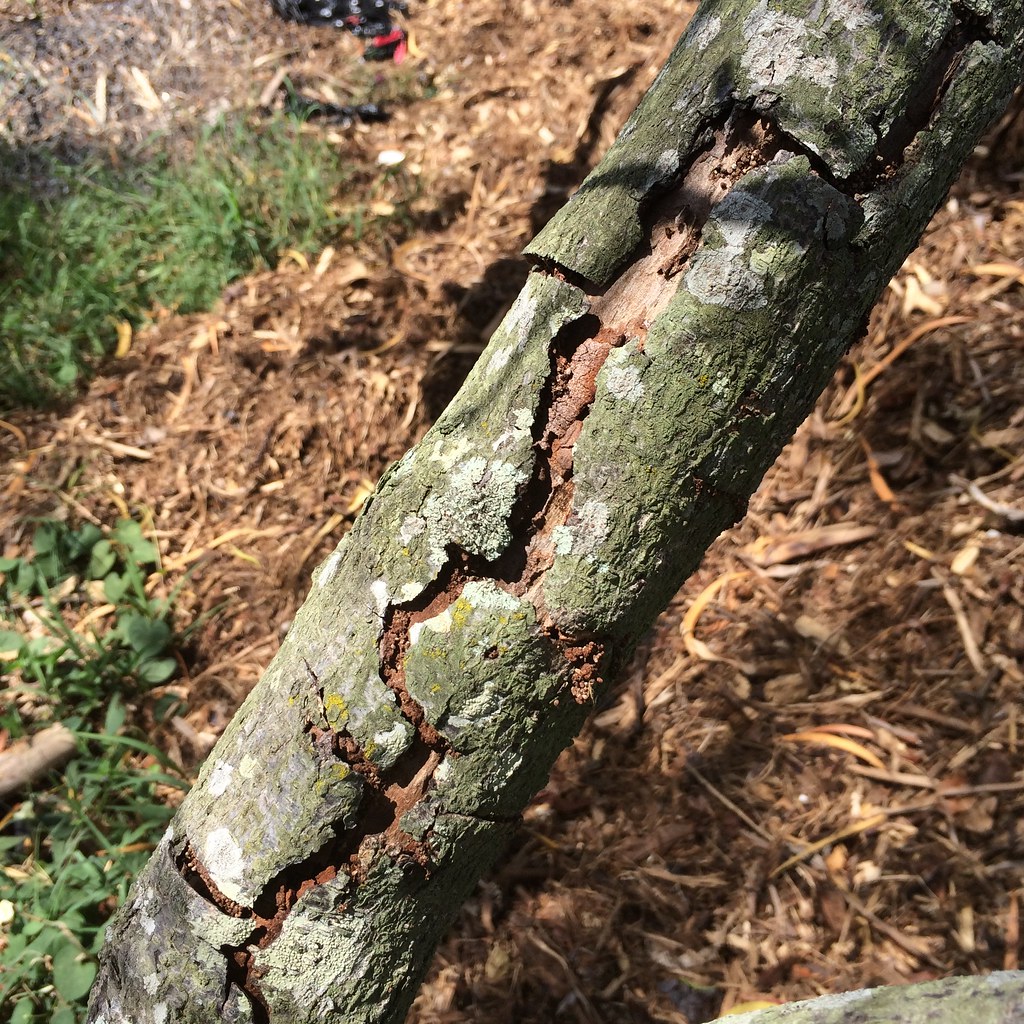
Shallow bark canker
Erwinia nigrifluens
What is Shallow bark canker (Brennaria nigrifluens)?
Brennaria nigrifluens (formerly Erwinia nigrifluens) is a bacterium that affects walnut trees. Infected trees show symptoms such as small cracks on the trunk and branches, with brown to black liquid seeping out that dries to form tarlike spots. Dark brown dying tissue appears in the outer bark.
How does Shallow bark canker (Brennaria nigrifluens) occur?
Bark canker is caused by the bacterium Brenneria nigrifluens. The disease spreads through infected plant material and can be introduced into new areas through the movement of infected plants. Once the bacterium enters the tree, it colonizes the bark, leading to the formation of small longitudinal cracks. The canker reproduces by spreading within the tree, causing necrotic areas and leading to progressive branch decline and tree death. The severity of the disease can vary depending on the Juglans species and environmental conditions.
Symptoms
1 - Impacts on Plants, soil, and Environment
Bark canker caused by Brenneria nigrifluens can have a significant impact on affected plants. It can lead to progressive branch decline, reduced vigor, foliage reduction, and ultimately, the death of the infected trees. Moreover, it has a minimal overall impact on plant health and productivity.
Solutions
1 - Prevention and Management
• Promote tree vigor through proper watering, fertilization, and pruning practices. • Minimize tree stress factors like drought, poor nutrition, and physical damage. • Maintain good overall tree health to enhance resistance against diseases. • Implement proper sanitation measures by removing and destroying infected plant material. • Regularly monitor and scout trees for early detection of symptoms.
2 - Treatment and Control Measures
• There are no specific treatments available for Shallow Bark Canker caused by Brennaria nigrifluens. • Focus on preventive measures and tree management practices to minimize the impact of the disease. • Consult local experts for the latest research findings and specific control measures. • In severe cases, experts may recommend targeted chemical treatments, but these should be used under their guidance and following approved guidelines.
